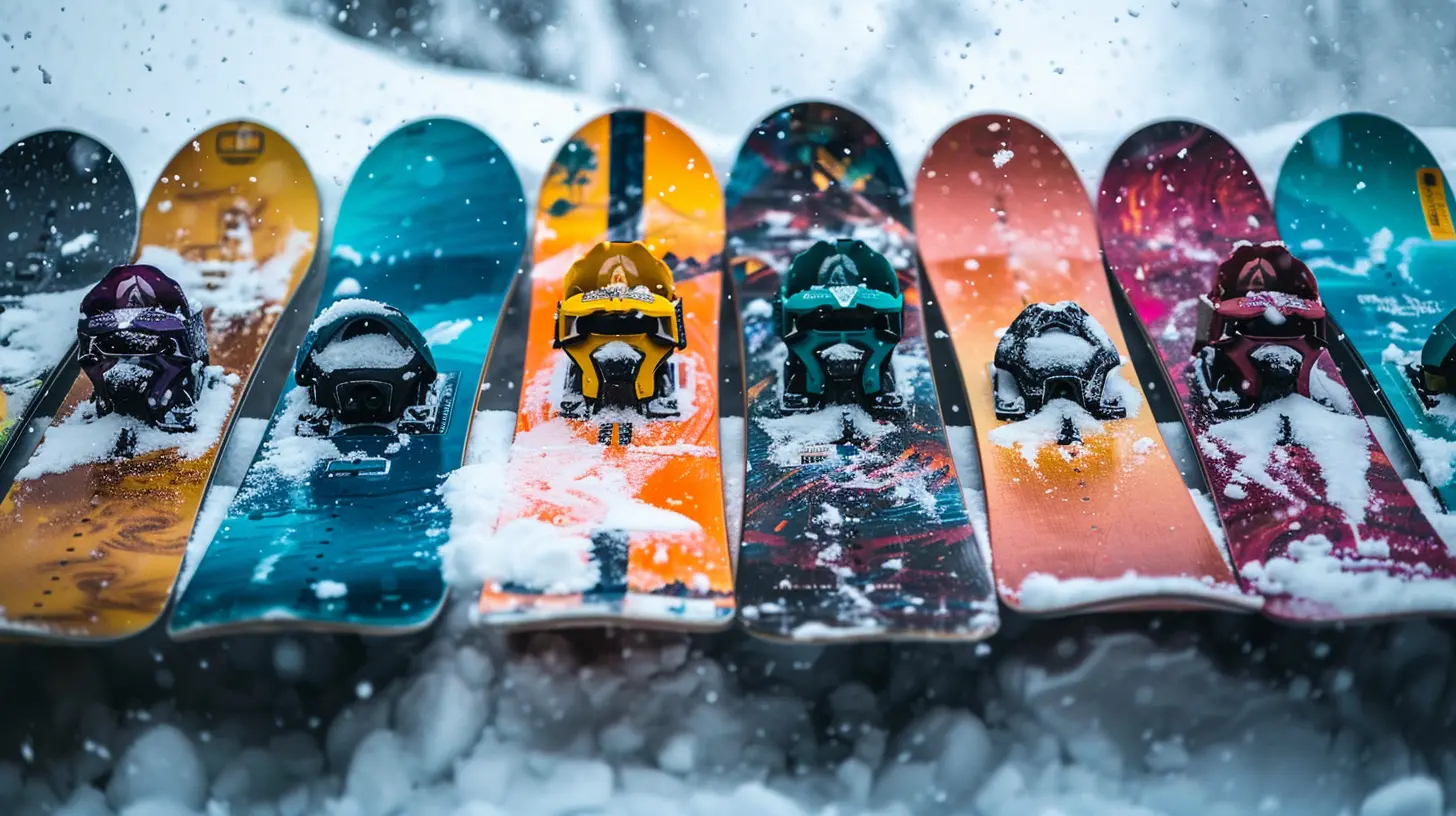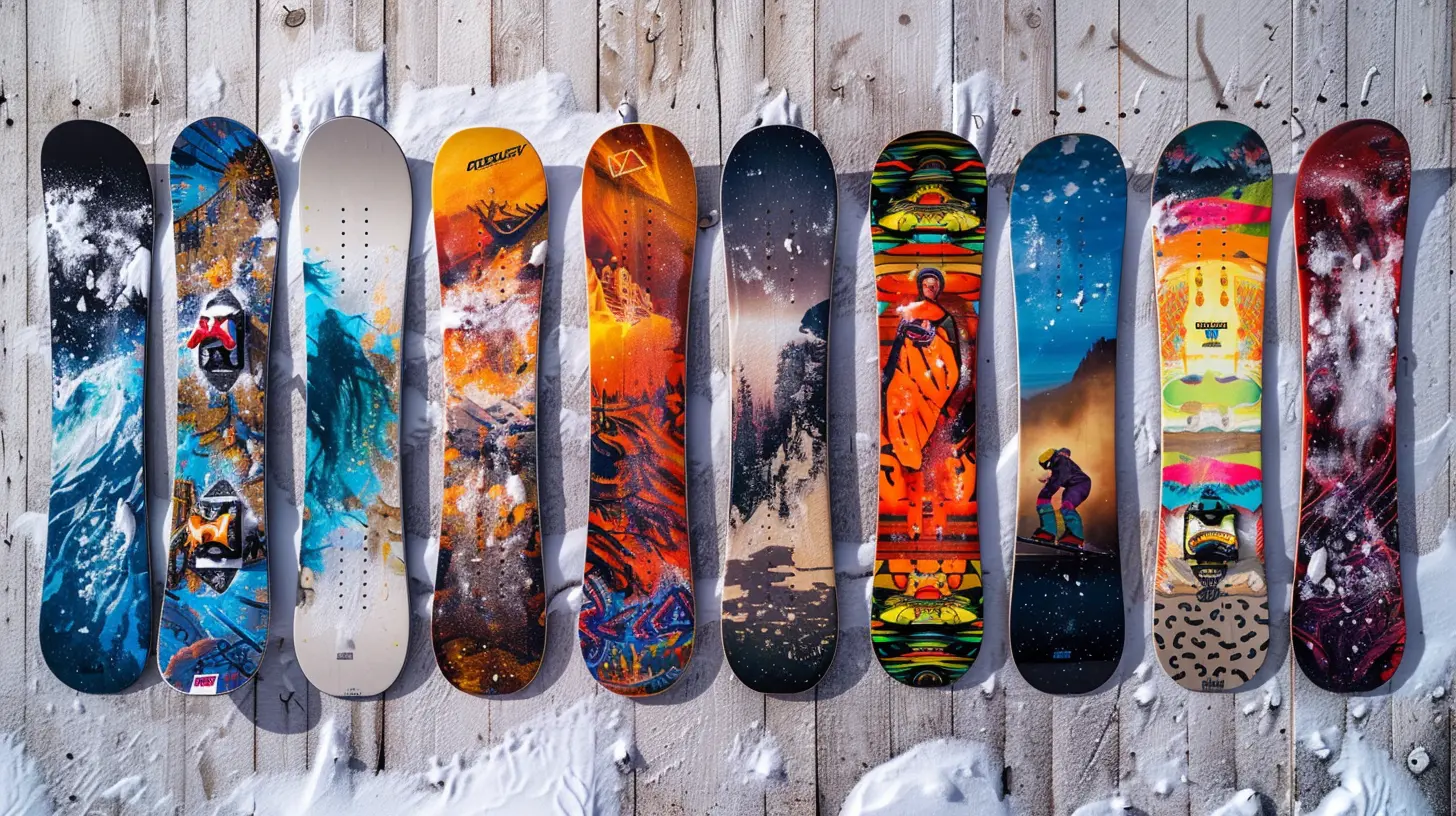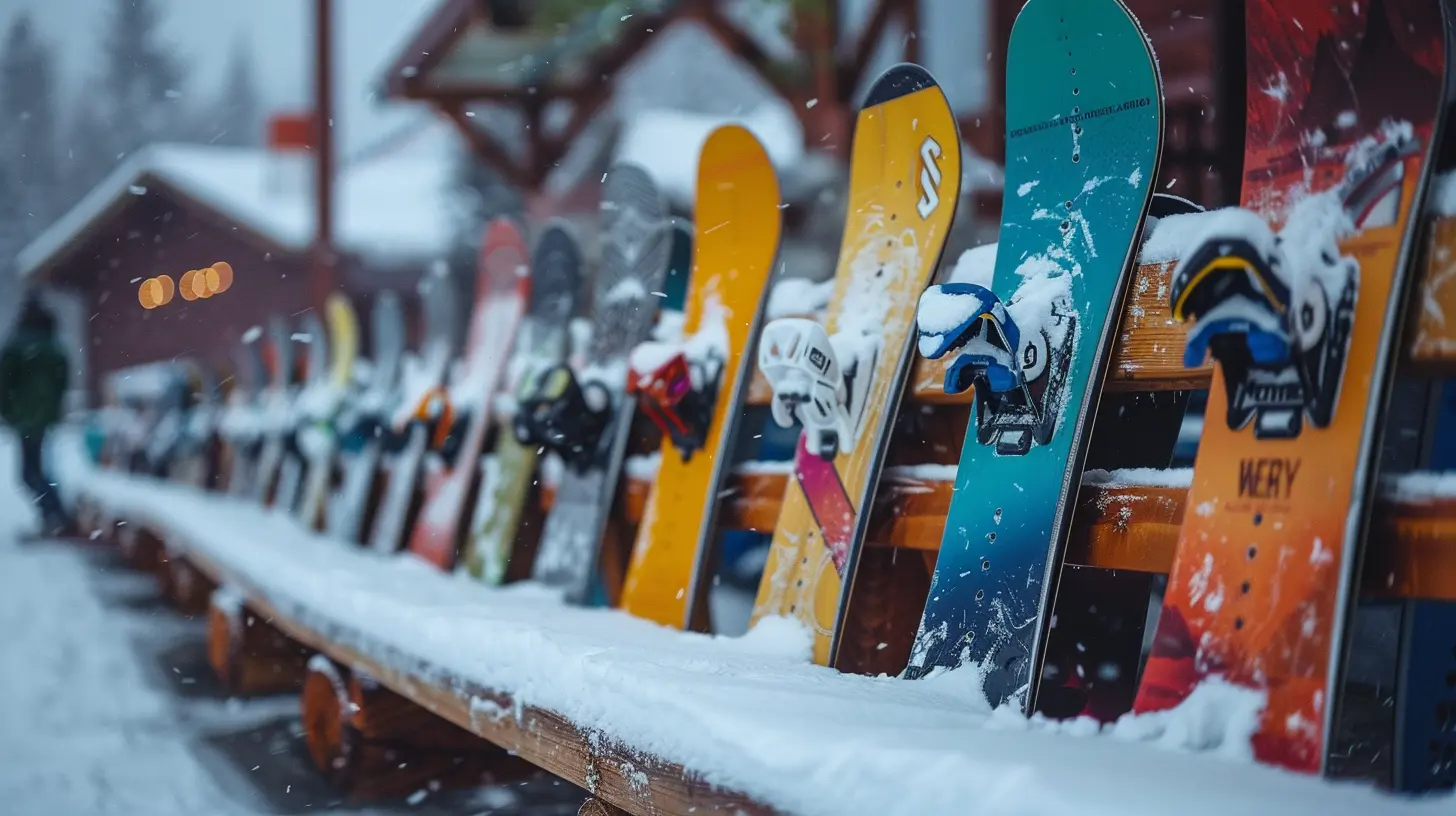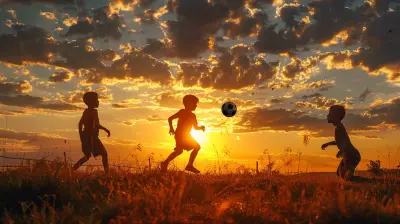Selecting the Best Snowboard for Your Riding Style
26 November 2025
Alright, shredders and snow bunnies! So, you’re getting serious about snowboarding (or maybe just tired of borrowing that beat-up rental board that rides like a wonky shopping cart). You're probably wondering, _“How the heck do I pick the right snowboard for ME?”_.
You’ve come to the right place.
Selecting the best snowboard for your riding style isn’t rocket science, but it’s also not a free-for-all. With so many shapes, sizes, and styles out there, it can feel more overwhelming than a fresh powder dump on a Monday morning. But don’t stress—we’re going to break it down, nice and easy, so you can find your perfect ride and hit the mountain with confidence.
What’s Your Snowboarding Style Anyway?
Let’s start with the basics: what kind of rider are you?Everyone's got their own groove on the mountain, and your style should guide your board-buying decision. You wouldn't wear flip-flops to a snowball fight, right? Same idea here.
Ask yourself:
- Do you like carving down groomers and feeling the wind in your face?
- Are you all about park laps, jumps, and rails?
- Maybe you're chasing powder in the backcountry?
- Or are you a little bit of everything?
Let’s look at the main styles:
🏂 Freestyle: The Trickster’s Choice
If you’re the type to spend your day in the terrain park, grinding rails, hitting kickers, and throwing down 360s—even if you're still working on your 180s—then a freestyle board may be your jam.Look for:
- Shorter length (easier to maneuver)
- Twin shape (so you can ride switch like a boss)
- Soft to medium flex (for more forgiveness on landings)
- Rocker or hybrid profiles (for that loose, buttery feel)
Freestyle boards are built for creativity. Think of them as the skateboard of the snowboarding world—fun, flexible, and just a little rebellious.
🏔️ Freeride: The Explorer’s Ride
Freeriders are all about adventure. Think off-piste, tree runs, steep bowls, and untouched powder. It’s less about tricks and more about flowing with nature’s terrain.Look for:
- Directional shape (you mostly ride forwards)
- Longer length (for stability and float)
- Medium to stiff flex (for control at speed)
- Camber or directional hybrid profiles (for edge hold and precision)
If freestyle riders are like playful puppies, freeriders are like wolves—sleek, powerful, and totally in tune with the wild.
🎯 All-Mountain: The Jack-of-All-Trades
Don’t want to be pigeonholed? No worries. All-mountain boards are your do-it-all solution. These boards are versatile, comfy on groomers, steady in powder, and not afraid of a little park play.Look for:
- Directional or directional twin shapes
- Medium flex
- Hybrid camber profiles (the best of both worlds)
An all-mountain board is like that one friend who’s down for anything—from hiking to movie nights to spontaneous road trips. Always dependable.
🤘 Powder: The Deep Snow Dream
If you live for the days when the snow is as deep as your thigh-high snowboard socks, then a powder board is for you.Look for:
- Tapered or directional shapes (tip heavy for better float)
- Longer nose, shorter tail
- Stiffer flex
- Rocker or hybrid profiles (helps stay on top of deep snow)
Powder boards often look a little funny—think oversized nose, stubby tail—but trust me, in the deep stuff, they ride like a dream.
Size Does Matter: Finding Your Perfect Board Length
Alright, let’s talk size. The length of your snowboard affects everything from control to speed to float.Here’s a quick and dirty way to eyeball it: stand the board upright. It should reach somewhere between your chin and nose.
But that’s just a starting point. Here are a few more details to fine-tune your fit:
- Weight matters more than height. A heavier rider needs a longer board for stability.
- Freestyle riders can size down for easier tricks.
- Freeride and powder seekers might want a longer board for speed and float.
If you're still unsure, most manufacturer websites have size charts based on weight and style. Super handy.
Shape Up: Snowboard Shapes Explained
Shapes aren’t just about looks—they seriously impact how a board rides.Twin Shape
Perfectly symmetrical. Great for park riders and switch riding.Directional Shape
Nose is different from the tail. Ideal for freeriding and carving groomers.Directional Twin
Best of both worlds. Great for all-mountain riders who dabble in freestyle.Tapered Shape
Wider nose, narrower tail. Made for floating over powder like magic carpets.Picking the right shape is like choosing your pizza toppings: sure, you _can_ put pineapple on everything, but wouldn’t pepperoni just make more sense sometimes?
Flex Appeal: How Stiff Should Your Board Be?
Snowboards come with different levels of flexibility, ranging from soft to stiff. Think of it like mattress firmness, but for your feet.- Soft flex – forgiving and playful, ideal for beginners and freestyle fun.
- Medium flex – all-around performer, perfect for all-mountain shredders.
- Stiff flex – precise and powerful, built for high-speed carving or gnarly big mountain lines.
So what’s right for you? Well, if you’re learning, go softer. If you’re bombing down black diamonds, stiffer is better.
Camber, Rocker & Everything In Between
Snowboard profiles can get a bit techy, but let’s keep it simple.Camber
The traditional profile—arched center with contact points near the tip and tail. Provides precision and pop.Rocker (Reverse Camber)
Opposite of camber—rises at the tip and tail. Glidey, floaty, great for powder and forgiving landings.Flat
Totally flat base. Balanced feel and good edge hold, but can feel a bit “meh” for some.Hybrid
Mixes camber and rocker zones. Best of both worlds, and super popular these days.Pick the profile based on how you plan to ride. Rocker is chill and forgiving. Camber is snappy and responsive. Hybrid is the Swiss Army knife.
Snowboard Width: Don't Let Toe Drag Happen to You
Wide boards exist for a reason! If you’ve got big feet (typically size 11 US or higher), you might need a wide board to prevent toe and heel drag while carving.Check your boot overhang. If it’s too much, you’ll catch edges—aka, wipeout city.
Bindings & Boots Matter Too
Just before you click “Add to Cart” on that sweet new board, don’t forget the rest of your setup.- Boots determine comfort and control. Stiff for speed, soft for freestyle.
- Bindings translate your movements to the board. Make sure they match your boot size and flex needs.
A great snowboard setup is like a finely tuned band—the board’s your guitar, the boots are your riffs, and the bindings? They bring it all together like bass and drums.
A Word on Skill Level
Be honest with yourself. Are you a seasoned shredder or just getting your snow legs?Most boards are rated for skill level: beginner, intermediate, or advanced.
- Beginner boards are softer, more forgiving, and easier to control.
- Intermediate boards offer versatility and allow progression.
- Advanced boards are stiffer and more demanding—great for experienced riders who know what they’re doing.
Aim for a board that’ll grow with you but won’t punish every little mistake.
Bonus Tips That’ll Make You Sound Like a Pro
- Don’t chase trends. What’s cool on Instagram might not be cool for your riding style.- Rent before you buy. Test different boards if you can—it’s like dating before you settle down.
- Consider terrain. Where you usually ride (East Coast ice vs. West Coast pow) makes a big difference.
- Read real reviews. Not just marketing fluff—see what actual riders are saying.
Final Thoughts: Ride Your Own Ride
Look, there’s no “one-size-fits-all” when it comes to snowboards. The best board is the one that matches _your_ style, goals, and weekend mountain rituals.Don’t get caught up in brand hype or what your buddy swears by. Your snowboard should feel like an extension of you—whether you’re slashing pow like a mad artist or locking into rails like a street magician.
So take your time. Ask questions. Try stuff out. And when that perfect board comes along? Oh, man… you’ll know.
Happy shredding, and may your landings always be soft!
all images in this post were generated using AI tools
Category:
Sports EquipmentAuthor:

Uziel Franco
![The Engine of the Team: How [Player Name] Drives Success](/pictures/blog/small/the-engine-of-the-team-how-player-name-drives-success_4.webp)
